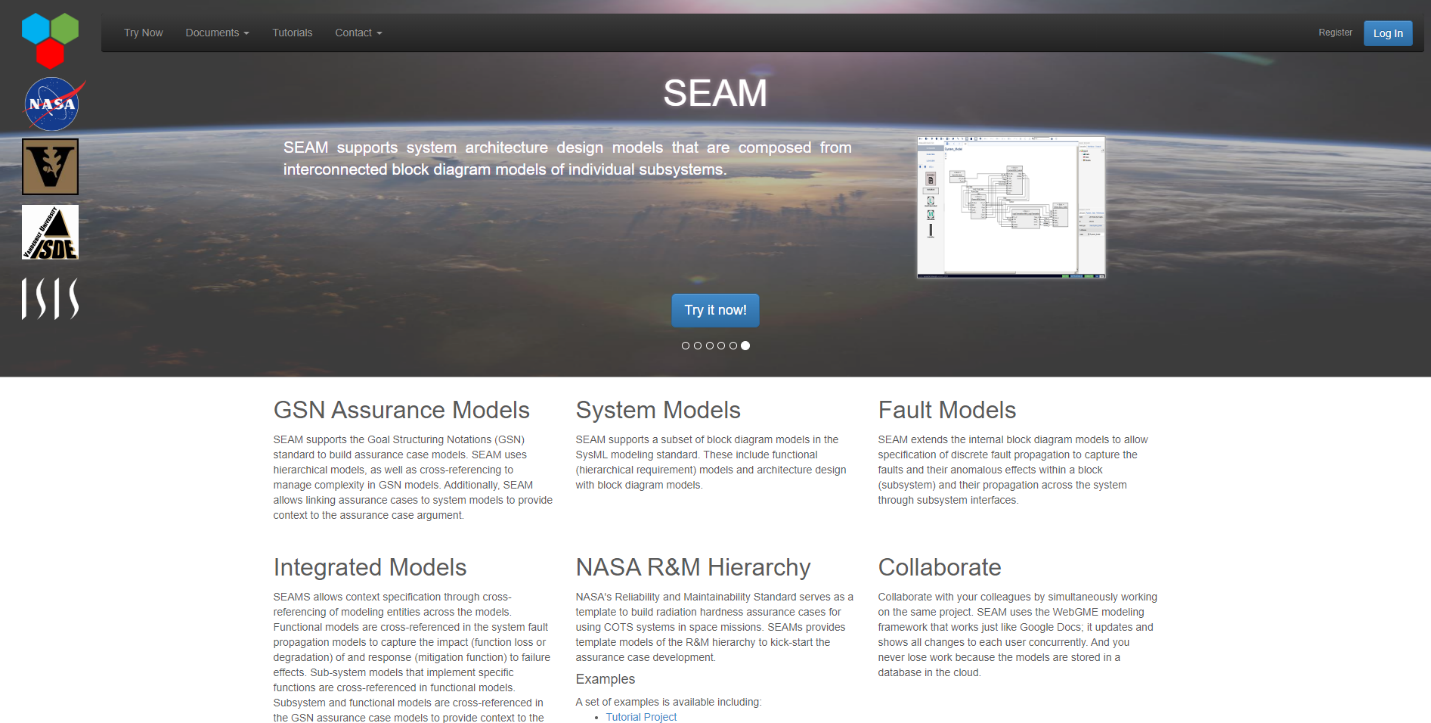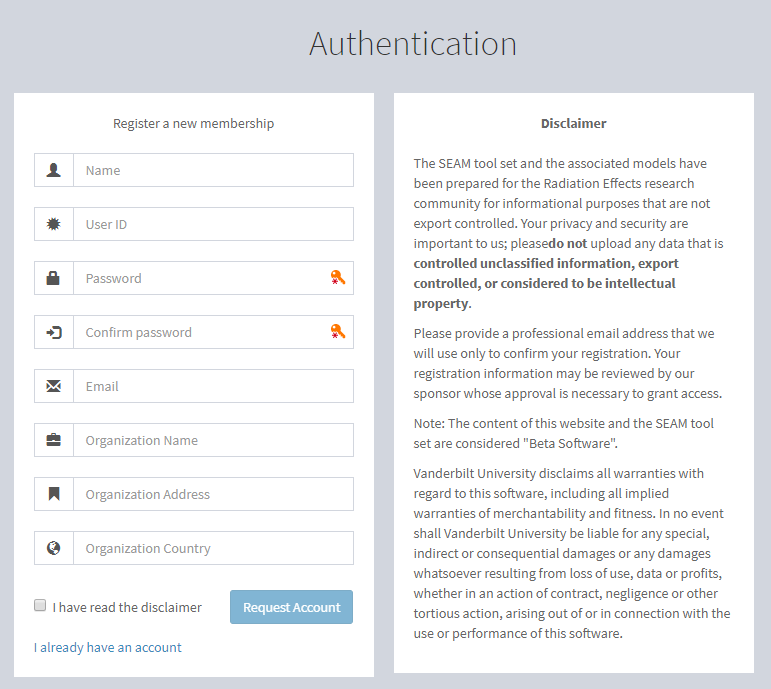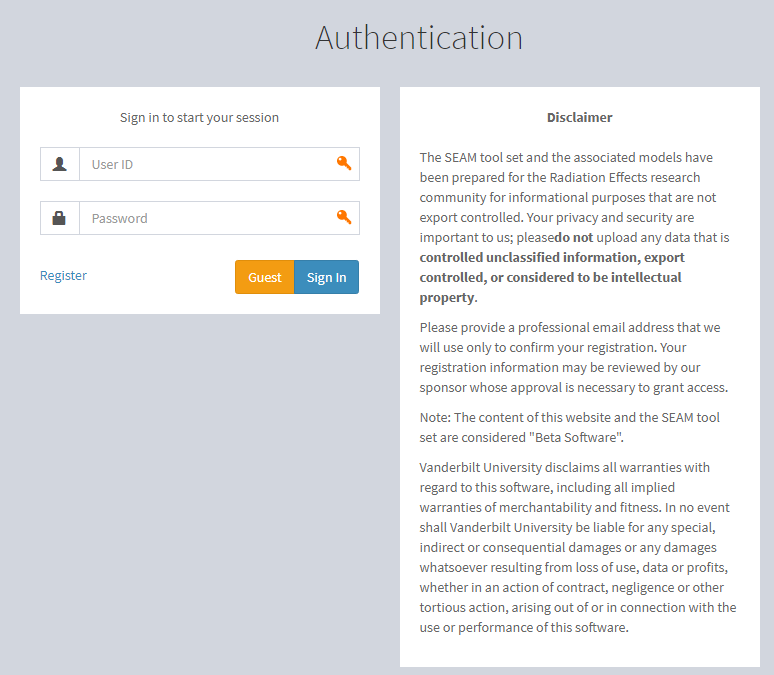Systems Engineering And Assurance Modeling (SEAM)
What is Model-Based Mission Assurance and SEAM?
Model-based mission assurance (MBMA) is an alternative to document-based mission assurance for establishing the risk and reliability of systems. It leverages block diagrams and fault trees that allow for easy visualization of requirements and fault propagation.
SEAM (Systems Engineering and Assurance Modeling) is a web-based collaborative modeling platform for modeling radiation assurance cases integrated with the models of the system. It is based on NASA’s Reliability and Maintainability Standard. In SEAM, project teams can create multiple types of linked models for their systems that can be easily accessed by the entire project team. Some of the types of models that can be created in SEAM are Goal Structuring Notation (GSN) models, System block models (SysML), fault propagation models, and Bayesian nets. These models can be used independently or linked, and all members of a project can have access to them.
Creating a SEAM Account

Figure II.1. SEAM welcome page.
Figure II.1 above shows the SEAM welcome page, which is available at https://modelbasedassurance.org/. The "Log In" and "Register" links can be found in the upper right corner of the welcome page. Clicking on the "Register" link will bring up the page shown in Figure II.2, below. After entering in the requested information, reading and acknowledging the Disclaimer, and hitting "Request Account," an account will be created. The Disclaimer is reprinted at the end of this section. The user will be notified via the email used to register when the account is ready, which can take up to one (1) week. If you would like to run your own copy of SEAM locally, please see Section E of this chapter.

Figure II.2. SEAM new membership registration page.
After an account is created, clicking the "Log In" button on the welcome page will bring up the log in screen shown in Figure II.3. After entering the username and password used during registration, the user will be taken to their Projects page. More on the Projects page and project management will be covered in Section III -- Project Management.

Figure II.3. SEAM user login page.
Useful Resources
This subsection contains links to useful resources for learning about SEAM and MBMA, examples of SEAM+MBMA in use, and resources that are useful for radiation effects analysis. It is not the purpose of this User Manual to describe how to use any of these resources and it is assumed that the user knows how to use any external resources that are necessary for their projects. The most useful resources for new users would be the first six (6) papers listed under the “Papers on SEAM and MBMA” bullet point.
NASA -- https://www.nasa.gov/
ISDE -- http://www.isde.vanderbilt.edu/
ISIS -- https://www.isis.vanderbilt.edu/
WebGME -- https://webgme.org/
NASA R&M Hierarchy -- https://standards.nasa.gov/standard/nasa/nasa-std-87291
CRÈME -- https://creme.isde.vanderbilt.edu/
Spenvis -- https://www.spenvis.oma.be/
Papers on SEAM and MBMA:
PowerPoint on Reliability & Maintainability Hierarchy -- https://sma.nasa.gov/docs/default-source/News-Documents/r-amp-m-hierarchy.pdf
Goal Structuring Notation Standard -- http://www.goalstructuringnotation.info/documents/GSN_Standard.pdf
Master's Thesis on MBAC+ and SEAM -- https://etd.library.vanderbilt.edu//available/etd-06302016-120807/unrestricted/austin.pdf
Goal Structing Notation in a Radiation Hardening Assurance Case for COTS-Based Spacecraft -- https://modelbasedassurance.org/documents/GSN_GOMAC.pdf
A CubeSat-Payload Radiation-Reliability Assurance Case using Goal Structuring Notation -- https://modelbasedassurance.org/documents/GSN_RAMS.pdf
Towards a Framework for Reliability and Safety Analysis of Complex Space Missions -- https://modelbasedassurance.org/documents/MBAC_AIAA.pdf
Reliability Assurance of CubeSats using Bayesian Nets and Radiation-Induced Fault Propagation Models -- https://modelbasedassurance.org/documents/GSN_NEPPETW.pdf
Hosting a Local Version of SEAM
Clearly the AWS public version of SEAM is meant to be used with non-proprietary information. If you or your organization would like to host a free version of SEAM on your own server behind your own firewall, simply contact the SEAM administrator and we will arrange to send you a Docker Container (www.docker.com), that will easily run SEAM on your server so that you can use it to model your own proprietary or restricted information systems.
SEAM Disclaimer
The SEAM tool set and the associated models have been prepared for the Radiation Effects research community for informational purposes that are not export controlled. Your privacy and security are important to us; please [do not] upload any data that is [controlled unclassified information, export controlled, or considered to be intellectual property.]
Please provide a professional email address that we will use only to confirm your registration. Your registration information may be reviewed by our sponsor whose approval is necessary to grant access.
Note: The content of this website and the SEAM tool set are considered \"Beta Software\".
Vanderbilt University disclaims all warranties with regard to this software, including all implied warranties of merchantability and fitness. In no event shall Vanderbilt University be liable for any special, indirect or consequential damages or any damages whatsoever resulting from loss of use, data or profits, whether in an action of contract, negligence or other tortious action, arising out of or in connection with the use or performance of this software.